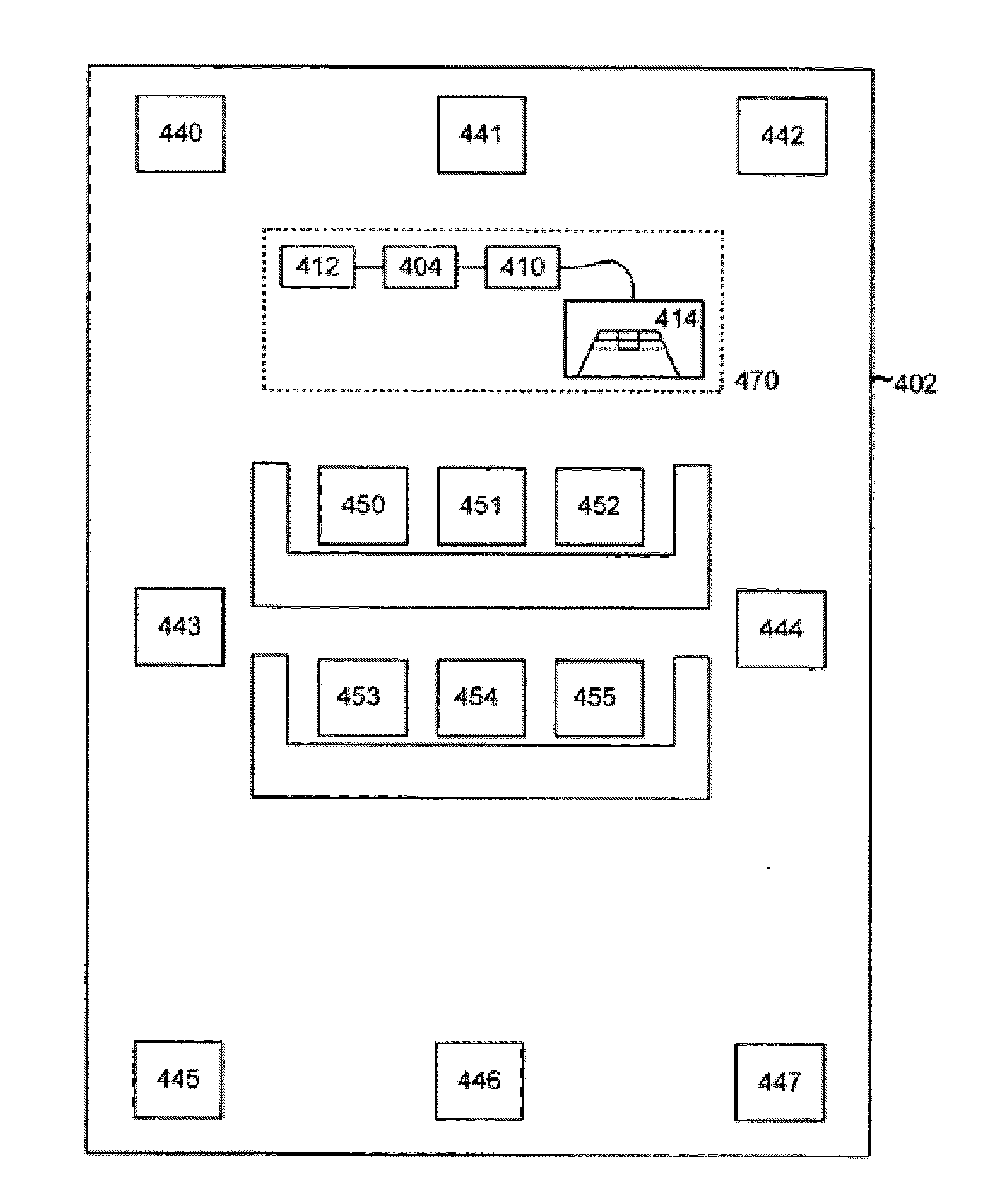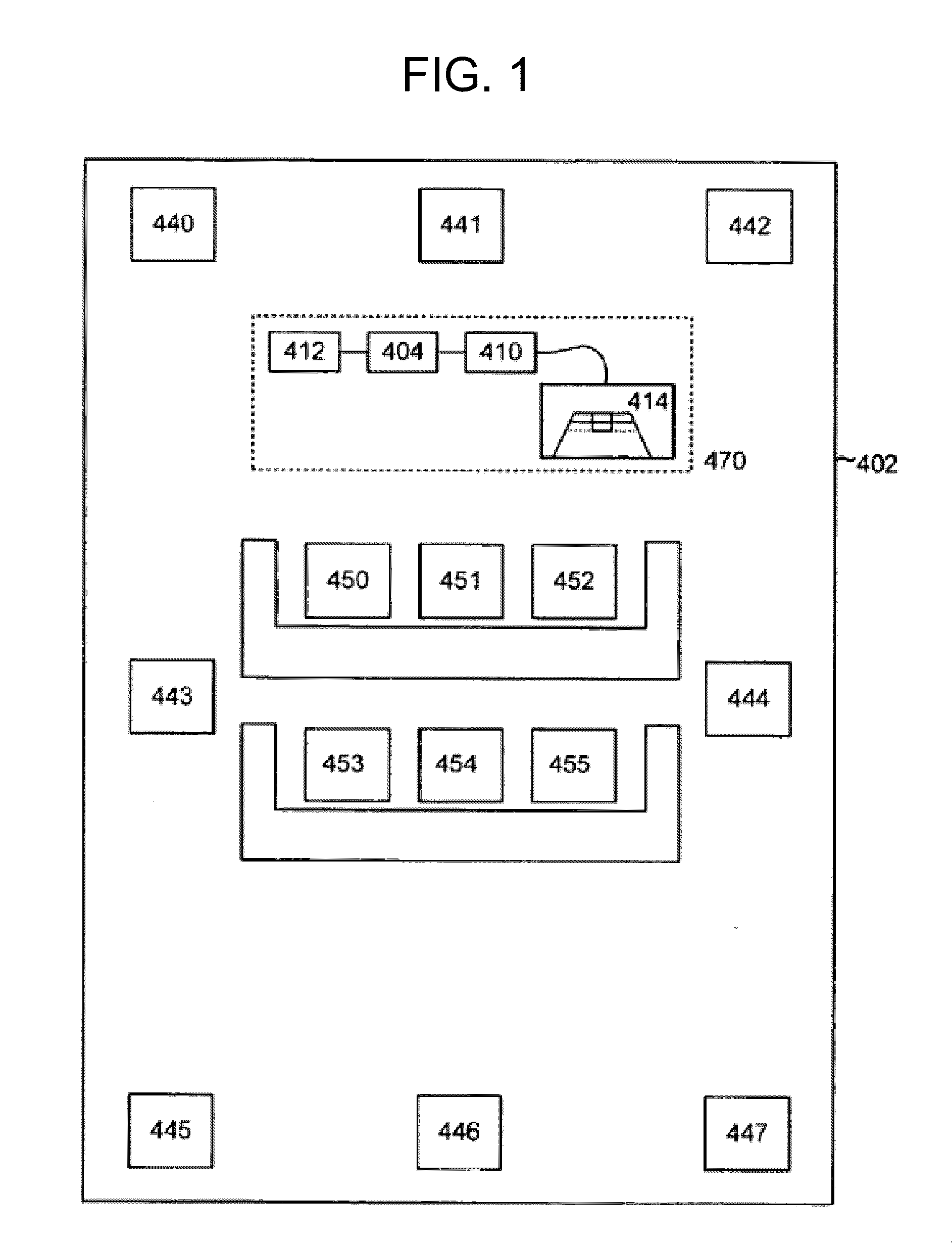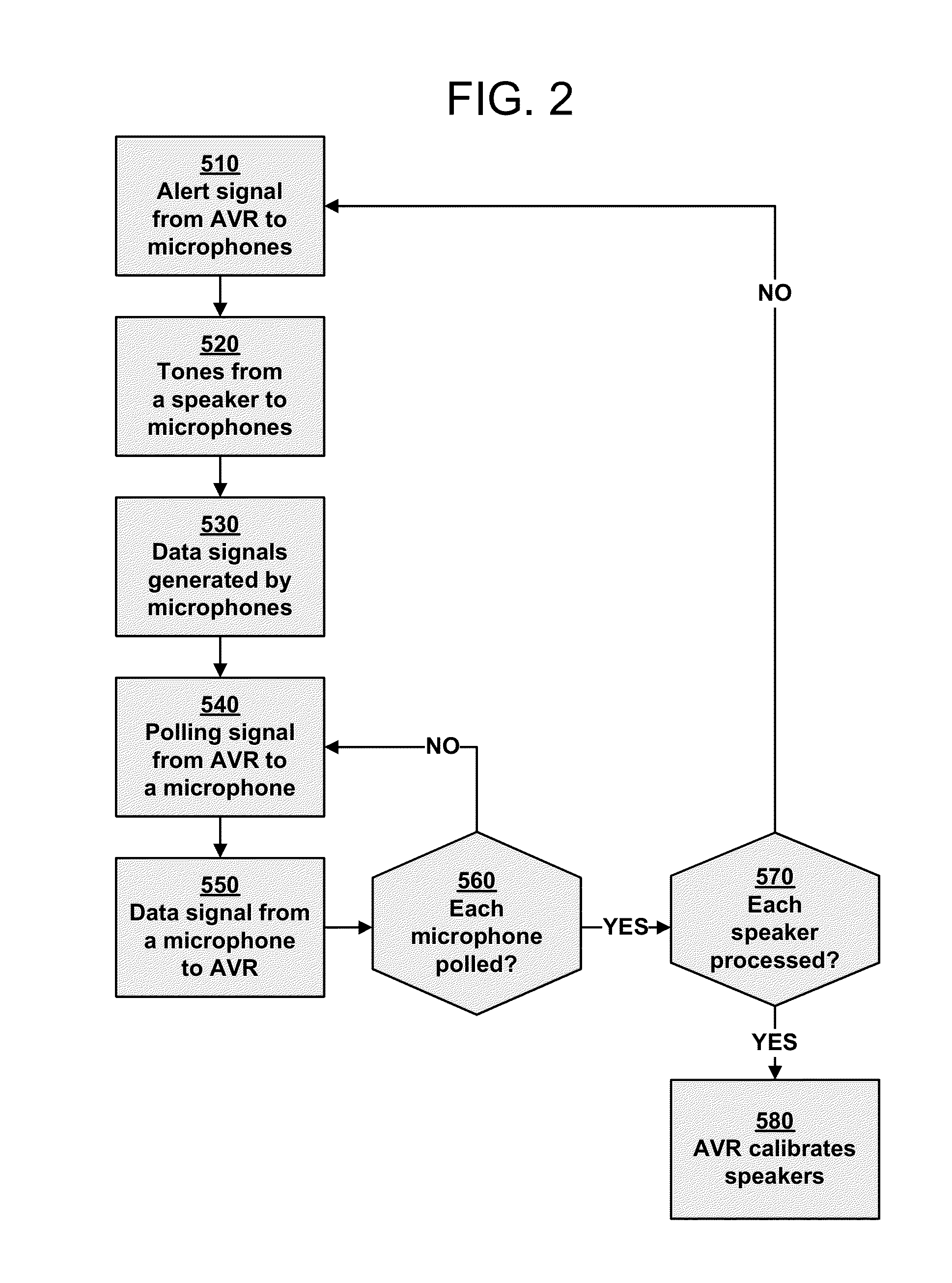Loudspeaker Calibration Using Multiple Wireless Microphones
a wireless microphone and microphone technology, applied in the direction of stereophonic systems, electrical apparatus, etc., can solve the problems of modifying the arrangement of wireless microphones to utilize one or more wireless microphones, affecting the listening experience at other locations within the listening area, and affecting the listening experience at other locations
- Summary
- Abstract
- Description
- Claims
- Application Information
AI Technical Summary
Benefits of technology
Problems solved by technology
Method used
Image
Examples
Embodiment Construction
[0073]The present invention is a technique which advantageously utilizes multiple wireless audio input devices for performing calibration of one or more audio output devices.
Mode(s) for Carrying Out the Invention
[0074]FIG. 1 shows an exemplary theater setup suitable for use with an embodiment of the present invention. The theater setup is configured within listening area 402, which may be a living room or conference room. The theater setup includes a calibration device (e.g., audio-video receiver (AVR) 470), audio output devices (e.g., loudspeakers 440-447), and six listening positions 450-455. As would be understood by one skilled in the art, the number, location and configuration of loudspeakers and listening positions shown in FIG. 1 are purely exemplary and may be varied.
[0075]Moreover, some or all of the functionality described herein as being associated with AVR 470 could be implemented using another component or a combination of components in addition to or instead of AVR 470...
PUM
 Login to View More
Login to View More Abstract
Description
Claims
Application Information
 Login to View More
Login to View More - R&D
- Intellectual Property
- Life Sciences
- Materials
- Tech Scout
- Unparalleled Data Quality
- Higher Quality Content
- 60% Fewer Hallucinations
Browse by: Latest US Patents, China's latest patents, Technical Efficacy Thesaurus, Application Domain, Technology Topic, Popular Technical Reports.
© 2025 PatSnap. All rights reserved.Legal|Privacy policy|Modern Slavery Act Transparency Statement|Sitemap|About US| Contact US: help@patsnap.com



